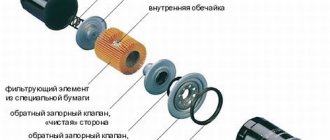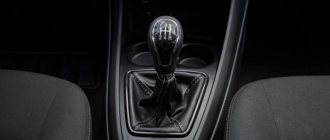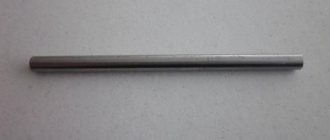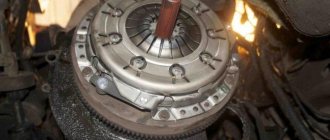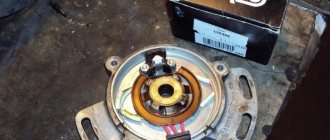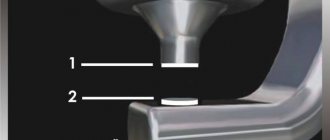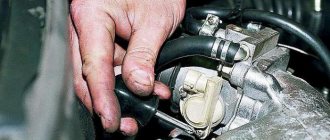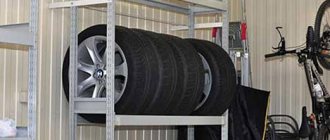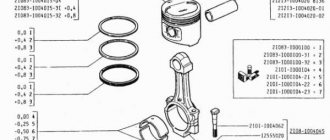While operating a vehicle, many motorists notice oil leaking from under the oil filter. This problem may be relevant both for owners of fairly old cars with high mileage, and for relatively new internal combustion engines.
In the first case, oil flows in the area of the oil filter due to the fact that the oil pump of the lubrication system may not have a pressure reducing valve that prevents excess pressure in the system. Most often, the problem appears after a cold start in winter, when the oil thickens in the crankcase of the power unit. The thick lubricant simply does not have time to pass through the filter, resulting in oil being squeezed out.
We also recommend reading the article about why oil is squeezed out through the breather. From this article you will learn about the causes and ways to eliminate such a breakdown.
As for modern engines, leaks for this reason are not normally allowed, since the presence of an excess pressure relief valve in the design of modern systems eliminates this possibility. For this reason, an oil leak from under the oil filter housing is a malfunction and becomes a reason for diagnosing the power unit.
In this article we will talk about the reasons why oil leaks from the oil filter, what to do if an oil leak is detected from under the oil filter cap or housing, and also how to fix it.
Conditions for such cases to occur
The main mistake made by drivers, which results in oil being squeezed out through the oil filter, is considered to be a cold start of the engine at high speeds. This is especially common in used cars. This is absolutely not necessary, since oil compositions, especially those of mineral origin, thicken in the cold and become like jelly.
The pump produces high pressure at higher speeds and can force lubricant through any leaky areas. In addition, in this mode, damage to the seals on the crankshaft is possible, and this is fraught with repairs and unplanned expenses.
If you often have to deal with frost, it is recommended to change the previous composition to oil with a viscosity of 0w20 and a filter with a spring mechanism.
Another well-known mistake that causes oil to be squeezed out from under the oil filter is the use of fast-acting substances that can quickly restore contact between rubbing parts. It is worth considering that the use of components is considered by the system as garbage and it will settle on the filtrate, interfering with the movement of the oil flow and, as a result, the lubricant is squeezed out through the seals.
There are several other important situations when a squeezing effect through the oil filtrate may occur:
- When changing the oil, it is not recommended to skimp on flushing materials and use “old-fashioned” methods of flushing the lubrication system, namely mixing unsafe compounds in the form of kerosene with acetone or benzene. Such connections, or rather part of them, will remain in the system forever, and this causes deformation of the seals.
- The usual addition of lubricating fluid to the previous composition. This habit is detrimental for some drivers who drive on the same oil for a long time. As a result of this action, a huge amount of undesirable impurities accumulates in the lubricant mixture
- Poor quality consumables. Using surrogates instead of regular oil with low-quality characteristics.
Ways to solve the problem
In most cases, to eliminate an oil leak, it is enough to correctly install the filter or replace it, as well as change the lubricant, taking into account the manufacturer’s recommendations and seasonality.
If leaks continue, in most cases this is due to a failure of the pressure relief valve. First of all, you should check the valve spring, which is located under the plug.
For inspection, the spring must be removed from its socket. There should be no burrs, creases, bends or other defects on the part. In addition, the spring should be tight, not stretched or weakened.
Detection of any defects in the spring is a reason to replace it.
Fake, and nothing more
The fuel and lubricants market is already overcrowded with low-quality products. Therefore, it’s easy to fall for the bait of unscrupulous sellers. There are several distinctive signs by which you can determine whether the material is fake or not.
The first parameter of a low-quality oil filter is the packaging geometry. If the case is deformed, then this is one of the signs of counterfeit. You can check the quality properties of the filtrate in another simple way, namely by blowing into the inlet holes. If the product is of high quality, then the petal should not open, but in a fake it’s the opposite.
It is worth paying attention to the polymer sealing ring and monitoring the condition of the filter paper. If a paper accordion has unevenness or different colors, then it is a fake. As for the polymer ring, its height should not exceed 0.8 mm above the level of the lid.
Fixing the problem
The valve can be removed without removing the pump itself.
What will you need?
- a set of keys;
- rags.
Stages
- Remove the timing belt cover.
- Unscrew the auto valve plug.
- We remove the spring.
- We take out the valve and check it for scratches and mechanical damage.
- Check the condition of the spring itself. There should be no kinks on it, and the height should be 44.72 millimeters, otherwise replace it.
Cork
Spring
Frame
Required spring sizes
We have listed almost all the possible reasons why lubricant is leaking; if even after this the problem is not resolved, then you should seek help from professionals at a service station. It is possible that they will be able to find something else and fix the leak.
Loading …
General issues
Let's consider general philistine questions about Granta and butter.
How to check the oil level in Grant
Checking the level
classically;
- The car must be turned off for at least 5-10 minutes;
- We take out the oil dipstick, wipe it with a rag and put it back;
- We take it out and look at the light - the level should be between MIN and MAX.
The dipsticks on the Lada suffer from the fact that they are difficult to read. You may need to wipe and lower the dipstick again.
If the dipstick is very difficult to read, you can go through the area indicating the level with fine sandpaper. This matting shows the oil level more clearly.
When to change the oil of a VAZ 2190
According to the regulations, replacement on the Grant is required every 15,000 kilometers. Practical experience suggests replacement every 10,000 km. mileage, or once/twice a year.
The first replacement occurs after break-in
new car - after 2000 km. This is not a requirement from the factory, but common sense - change the flooded s to something normal.
WEATHER IN THE HOUSE
At first, the salon was almost completely migrated from Axiom. But during the modernization on the H3, they introduced their own version. Although sometimes there are transitional H3s with an old interior. The internal electrical equipment has a separate control unit. Because of his abnormal work, the electrician sometimes went crazy. During the recall campaign, this unit was reflashed.
The disadvantage of the air conditioning system was the absence of a cabin filter (until this year) and the location of the lower refrigerant pipe, which suffers from reagents. The heater radiator requires attention - it sometimes leaks on old H2s.
The rain sensor may cause damage to the wipers. In winter, when the windshield wiper blades stick to the glass, due to its operation, the slots on the leads are cut off. Plastic bushings in the mechanism also often break; to replace them, you will have to completely disassemble the trapezoid.
Summary
Diagnostics and recommendations on what exactly to do will help you find out why oil is leaking from under a newly installed oil filter:
- Does the lubricant level in the engine crankcase exceed the MAX mark on the dipstick? If yes, remove some of the liquid.
- Is the wiper housing tightly pulled to the cylinder block? No - tighten it 1/2-3/4 turn.
- Is the thread broken? Yes - the steps depend on the specific car: install a longer stud, install a new tip, cut a new one...
- Is the correct oil filled? No - replace the emulsion.
- Is the filter part too tight? If yes, it will not twist when significant force is applied. Unscrew the filter element and look at the seal - deformation and cracks are not allowed, otherwise only replacement.
- Is the component original and of high quality? No - replace.
If there is pressure on the lubricant and the oil pressure lamp is on, the filter is dirty and the bypass valve is clogged. On cars with an impressive mileage, the cause of the leak may be a faulty pressure relief valve. Both problems often manifest themselves during the interregulatory period.
ENDANGERED SPECIES
“Hover” boasts a frame structure and a reliable suspension. The only reason for complaints is the rear shock absorbers on the restyled H3 and H5. Owners complain that they are too stiff, causing the rear of the car to bounce on bumps. But you can choose softer analogues. The silent blocks of the front upper control arms last 80,000 km, and the lower ones - approximately 100 thousand. Ball ones last about 60,000 km and usually die in pairs. Silent blocks of the rear suspension last approximately 100,000 km.
The braking system is poorly designed. Due to the heavy weight of the car, the pads wear out very quickly: the front ones after 20,000 km, and the rear ones after 35 thousand. At the same time, the front brake discs last for 80,000 km, and the rear ones are rarely changed. With heavy use, the brakes become sour by 20,000 km. It is worth doing their prevention every time you change the pads. Steering faults occur mainly on pre-restyling H2s. By about the age of five, the power steering pump may fail. The lower steering cardan connecting the bevel gear and the rack is also weak. At H3 this design was abandoned. The racks rarely break, and the tie rods and ends are replaced separately.
Consequences of breakdown
There are a number of negative consequences of lubricant leaking from under the filter element.
- Starvation of mechanisms due to decreased fluid levels.
- Alternator belt slipping.
- Short circuit of electrical circuits due to liquid ingress.
Important! It is not recommended to start a breakdown. Operating a vehicle can only make the situation worse. If there is excess pressure in the system, a further increase may cause the shaft seals to be squeezed out and substances to penetrate into the fuel combustion chamber.
This is interesting: Checking and replacing the mass air flow sensor Chery Tiggo
TWINS
The Chinese have mastered cloning technology well, and in the case of Hover, no gene mutations occurred. The twin of the Japanese Isuzu-Axiom turned out to be quite nice and solid. Initially, the car was made only in China, but already in April 2010, assembly was established in Gzhel, near Moscow. The Russian VIN is located under the hood, on the engine panel on the left, the Chinese one is stamped on the frame, behind the rear right wheel, during registration it is simply entered as a frame number. Our assembly, unfortunately, is not for the better. The body parts do not fit well, and already at the service center the car has to be completed, eliminating unacceptably large gaps. There have been cases when, due to poor assembly, leaks appeared in the interior along the openings of the rear doors and trunk lid.
The body paint of the Hover is not famous for its high quality, but it also does not have serious flaws. The biggest problem was the appearance of rust under the fifth door trim due to the poor design of the latter. But it was changed during the first restyling. The metal of the body is not galvanized, but with proper care it holds up at least.
Where can engine oil leak from?
If during the next daily inspection it turns out that the oil level is significantly below the maximum mark, you should seriously look for the problem. First of all, it is important to determine where the leak is located.
First of all, it is advisable to pay attention to the accessible engine components. One of them is the valve cover.
From under the valve cover
A leak in the valve mechanism may result in oil leakage from the engine lubrication system. Often, this problem is signaled by a characteristic burning smell from under the engine exhaust manifold.
In this case, it cannot be said with a high degree of probability that replacing the gasket will solve the problem. The occurrence of the presented malfunction may be associated with excessive pressure in the engine lubrication system.
This situation can be caused, for example, by a malfunction of the so-called pressure reducing valve.
Crankshaft oil seal
If a leak in the valve cover gasket can be corrected with little effort, as they say, the situation with the crankshaft oil seal is much more complicated. Replacing it due to the design features of the engine will require a lot of time and labor.
What could have caused the breach of its tightness?
Let us arrange the most probable causes of this malfunction in a certain sequence, starting with the most frequent:
- the operational resource has been developed;
- failure in the crankcase ventilation system;
- defective components;
- unscrupulous repairs.
Oil leak between engine and gearbox
Do not forget that the clutch flywheel housing also contains an oil seal, which sometimes makes itself felt, although extremely rarely. To verify the presence of such a malfunction, you will have to look under the bottom of the car.
In this case, it is best to drive the car into an inspection hole or so-called overpass. The presence of a leak will be indicated by an oily surface of the clutch housing and gearbox housing. To replace the oil seal, you will need to dismantle the gearbox.
Let us focus our attention on the reasons for this unfavorable phenomenon. Among them are:
- mismatch of lubricant viscosity;
- failures in the crankcase ventilation system;
- loss of elasticity of rubber goods;
- poor quality components.
Oil filter gasket
The oil filter seal can also be the culprit for an oil leak. So, during the next scheduled filter replacement, it could simply be tightened, and this is unacceptable. With such repairs, unfortunate oil leaks may appear over time.
It is also worth mentioning the fact that after each filter replacement, all associated rubber goods must be replaced. If this is not done, there is a high probability that oil formations will soon appear at the filter connection site.
In a particular case, oil from the engine lubrication system may be squeezed out due to malfunctions in the operation of the VKG system.
Engine crankcase problems
A frequent cause of engine oil leaks can be violations of the crankcase ventilation system. For the most part, owners of fairly used cars face a similar problem.
The fact is that as the CPG wears out, exhaust gases begin to accumulate in the engine crankcase. With a working crankcase ventilation system, excess pressure would be vented into the engine intake manifold. But it also happens that after prolonged use, and in the absence of proper care, the elements of the system become clogged.
Note: All ways to turn off the alarm in a car without a key fob
This state of affairs leads to the fact that the gases have nowhere to go, and they begin to look for the most vulnerable places, which are played by various sealing elements.
Video “Grease leaked”
This video shows why a lubricant leak occurred and what can be done to fix it. In this case, the rubber band was distorted due to careless actions of the mechanic at the service station.
During the operation of a car, every driver has to deal with periodic oil and oil filter changes. These basic procedures are not particularly difficult and can be done even by inexperienced motorists. The car's lubrication system is quite simple in design and does not create unnecessary difficulties during maintenance. However, as with any other component of the car, certain problems may arise with it. This will be especially noticeable when inspecting the engine. It is likely that there are traces of oil leakage from under the oil filter. In this matter, the condition of the motor is completely unimportant. The problem can appear on both old and new models. In this useful material, we will consider the problem in more detail and try to figure out what to do in this case.
How to determine oil starvation
It was immediately clear that the engine was “starved of oil”
First, let's talk about determining engine oil starvation, since the range of symptoms is quite wide - from a drop in engine power to overheating, extraneous noise and knocking. All this indicates wear of certain components characteristic of each engine. For example, in the most common overhead gasoline engines, accelerated wear and increased noise during operation of the gas distribution mechanism are often encountered.
Consequences
The consequences can be very different - jamming of the camshaft, bending of the camshaft, bending of the valves, destruction of the rocker arms, cranking of the crankshaft liners, jamming of the rings in the liner until the destruction of the pistons.
In addition, the oil scraper rings may become stuck, which will lead to even greater excess oil consumption and engine seizure. Thick blue smoke from the exhaust pipe will indicate a malfunction of the oil scraper rings and high oil consumption.
For what reasons can there be an oil leak through the oil filter?
There are several common problems that cause many vehicle owners to worry, worry and panic: strange noises coming from the engine compartment, flat tires, a car that won't start, and of course the most alarming thing is finding oil stains where you parked your vehicle. your car. There are many types of leaks of various automotive fluids. The most common is an engine oil leak. Most often, this oil leak originates in the oil filter. But what causes oil leaks?
Why does oil leak from the oil filter?
There are many reasons for an oil filter leak, but we will list some of the most common ones.
1. The first and most obvious is that the oil filter has not been changed for a long time . Use only a high-quality oil filter (preferably an original purchased from a dealer, since in the market and in a store you cannot be sure that you were sold a truly high-quality original and not a fake) and change it every time you change the oil at intervals recommended by the manufacturer ( see your vehicle's owner's manual).
2. Assuming the oil filter is new and clean, a possible cause of the leak may be improper installation . If a leak appears immediately after installing a new oil filter, then it is possible that the filter itself is not tightened enough or the housing is not tightened (in the case of a dismountable design).
3. Contamination of the oil filter under certain conditions can lead to the inability of oil to pass through the filter material. For this reason, most oil filters on the market today have a special bypass valve to prevent engine damage. But sometimes this valve can fail. This is especially true for cheap Chinese or Arabic analogues.
4. High engine oil pressure is another common cause of oil leaks in the oil filter area. An increase in pressure in the lubrication system can occur for various reasons, ranging from significant oil thickening in combination with excessive oil levels to some mechanical engine failures.
5. Another cause of oil filter-related leaks could be a problem with the threads on the fitting where the filter wraps. If the threads are broken or damaged, the filter housing will not be tightened properly during installation, resulting in oil being squeezed out of the engine.
6. We would also strongly recommend that all vehicle owners use motor oils that are recommended by your vehicle's manufacturer . Otherwise, you may end up using either too thin or too thick engine oil, causing leakage at the gaskets or seals.
7. Additionally, another cause of oil filter leakage is the fact that the oil pump may not have a pressure relief valve that prevents excess pressure in the lubrication system.
8. The oil filter gasket is damaged , or the seal does not seal properly due to improper installation of the filter element.
Most often, the problem occurs after a cold start in winter, when the oil thickens in the engine crankcase.
Thick motor oil simply does not have time to pass through the filter, as a result of which it is “squeezed out”.
In modern engines, such leaks are usually prevented because the system has a safety valve that eliminates this possibility.
For this reason, oil leakage from under the oil filter housing is a malfunction and becomes the reason for diagnosing the power unit.
We hope this helps!


